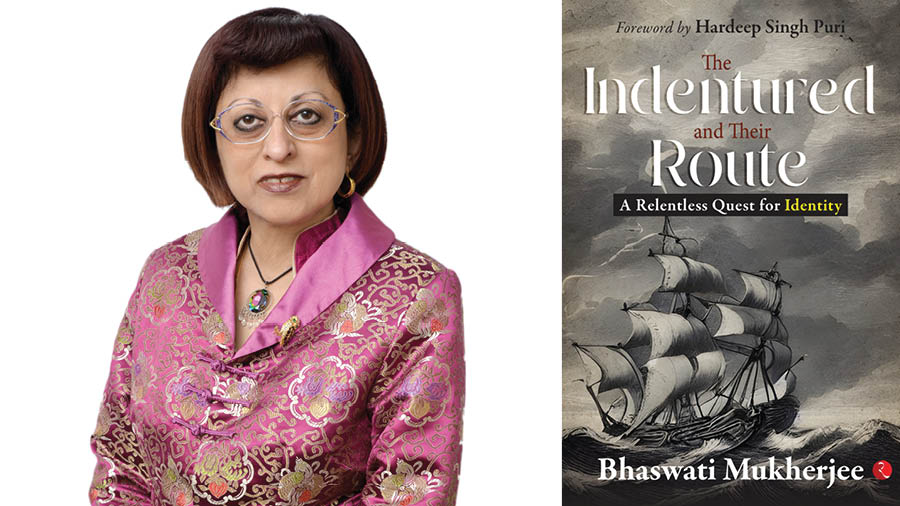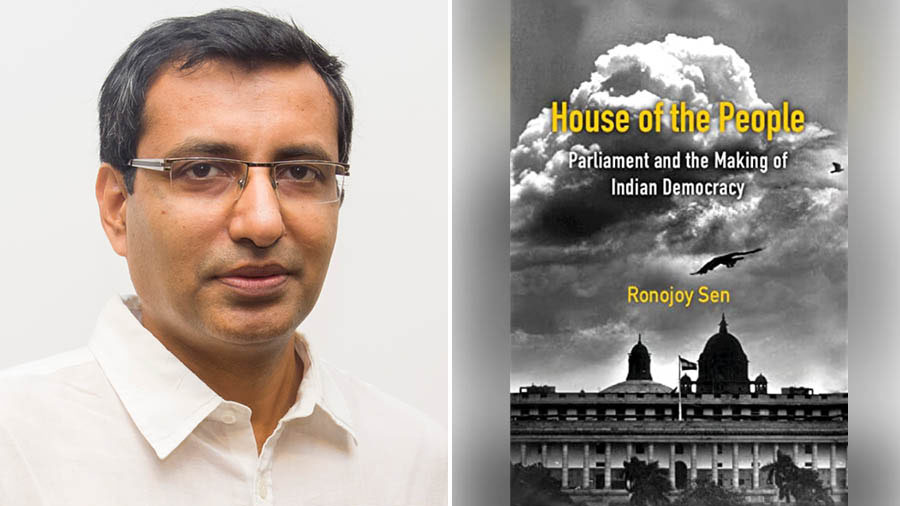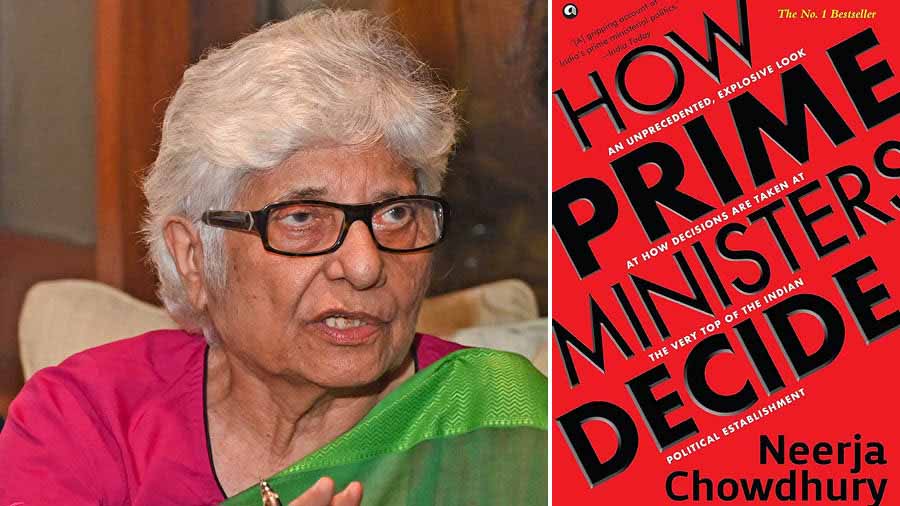“When people talk of the kind of horror in today’s world that we’re seeing right now with Israel and Palestine, they must understand that human bondage and cruelty are documented in history. And yet, we forget about it. Slavery, colonialism and the Holocaust are all part of that history. As is indenture. Those who are responsible for these atrocities must acknowledge and apologise,” says Bhaswati Mukherjee, diplomat, public speaker, president of the India Habitat Centre in Delhi and author of The Indentured and their Route (published by Rupa Publications). In her latest book, Mukherjee sheds light on the story of indenture and how it embroiled Indians, projecting a history that is as powerful as it is pathbreaking in understanding the Indian diaspora.
My Kolkata caught up with Mukherjee over video call to discuss how her book came about, why indenture was “such a huge tragedy”, what can be done to memorialise the indentured and more. Edited excerpts from the conversation follow..
My Kolkata: How did the idea of this book come about? What was the research process like?
Bhaswati Mukherjee: The idea came to me in 2006, when I was in Lithuania as India’s ambassador to UNESCO and India’s representative to The World Heritage Committee. The African Group (also known as the Group of African States) had highlighted the Aapravasi Ghat in Mauritius (where half a million indentured labourers from India had arrived between 1834 and 1920) as a historical site that humankind shouldn’t forget. A delegate of the International Council on Monuments and Sites (ICOMOS) tried to undermine the presentation of the African Group, saying that India was a miserable country and that indenture was a replica of modern immigration. She argued that going to Aapravasi back then was like going to Silicon Valley now. The then culture minister of Mauritius stepped in and asked me, as the Indian ambassador, to explain indenture, since the Africans, who are much better at explaining slavery, were finding it hard to do so. I spoke extempore for 15 minutes and, at the end of my presentation, delegates from the US, the Netherlands and New Zealand agreed that Aapravasi Ghat should be inscribed [on the World Heritage List] without any further debate. That’s when I decided that once I had spare time, which I had after I quit the Foreign Service, I’d write about indenture. My subsequent work in Mauritius, as a consultant helping the Mauritian government inscribe the indenture routes to give it the same status as the slave routes, also encouraged me to take up the book.
As far as the process is concerned, I hired a research assistant named Akash Chattopadhyaya, a PhD scholar on mediaeval India. Research material was sent to me in French from my friends in Mauritius. Akash and I also looked up a lot of content on the internet. He taught me how to research it in a way that involved indexing. The research was done intensely and in directions I wanted it to go, such as indentured women, how cholera patients were thrown overboard, the horrible quarantine measures on Reunion Island (a French department in the Indian Ocean), among others. Overall, the entire process of researching and writing the book took me one year and two months.
‘Naive, impoverished people of India were fooled and moved to foreign lands on the same ships that had been used for the slaves’

According to Mukherjee, the British duped brown natives from their colonised lands into indenture TT Archives
Are indenture and slavery essentially different or is their difference mostly about semantics?
In my book, I explain how they were two faces of the same colonial coin. On one hand, the oppression of the black slave and, on the other, the oppression of the brown indentured person. Due to huge pressure from the anti-slavery lobby, slavery was finally abolished in the British part of the colonial empire before the French part. Sugar plantations were vacant and the British realised after taking over Mauritius that to keep the sugar plantations going, they needed cheap labour. Since slavery was abolished, they thought they could take the brown natives of their colonised lands for a ride by misleading them about a better future. After the Battle of Plassey (1757), the British completely destroyed the agrarian base of India as well as its nascent industrialisation. They also raised the tribute by 70 to 80 per cent whenever there was a drought so as to drive people out of their lands. Consequently, naive, impoverished people of India were fooled and taken to the Kolkata harbour and moved to foreign lands on the same ships that had been used for the slaves.
The indentured were given water taken directly from the cholera-infested Hooghly river. Once people were infected, many of them were thrown overboard. Around 1.5 million Indians left India to go as indentured labour, which also impacted the labour supply back home, especially in eastern India. The Marwaris, for instance, couldn’t get any labour for their businesses and started putting pressure on leaders like Madan Mohan Malviya [to tackle the indenture situation].
‘A document to deceive innocent people into slavery’
What made the indenture contract, often called ‘girmit’, so dangerous for the indentured?
The ‘girmit’ had the imprints of desperate people who had left due to dire situations back home. They were told they’d get food, lodging and medical facilities. They were also told that they’d get passage back to their countries after service for two to three years. But the contract didn’t say all this. They were never told they’d have to cultivate sugar, which they weren’t used to. No medical facilities or lodging was provided to the indentured, just some basic breakfast and dinner. The British used to say that ‘girmit’ distinguished slavery and indenture. But it was a document to deceive innocent people into slavery. It was a farce. Sometimes it was written in French, but usually in English. The people putting their thumb marks knew neither. In reality, the period of indenture would be 10 years, during which the indentured would be tied to the plantations in the Caribbean, Mauritius or Fiji. Even when they somehow got time off, they weren’t allowed to leave the plantation and were escorted throughout. In Fiji, they tried to put the indentured people and the slaves against each other. The browns were kept away from the blacks, in an apartheid-esque system. They weren’t allowed to interact or intermarry and their children couldn’t go to the same schools. It was the typical British policy of divide and rule, involving partitioning land and people
‘The British had a misconception that Indians were meek and docile people’
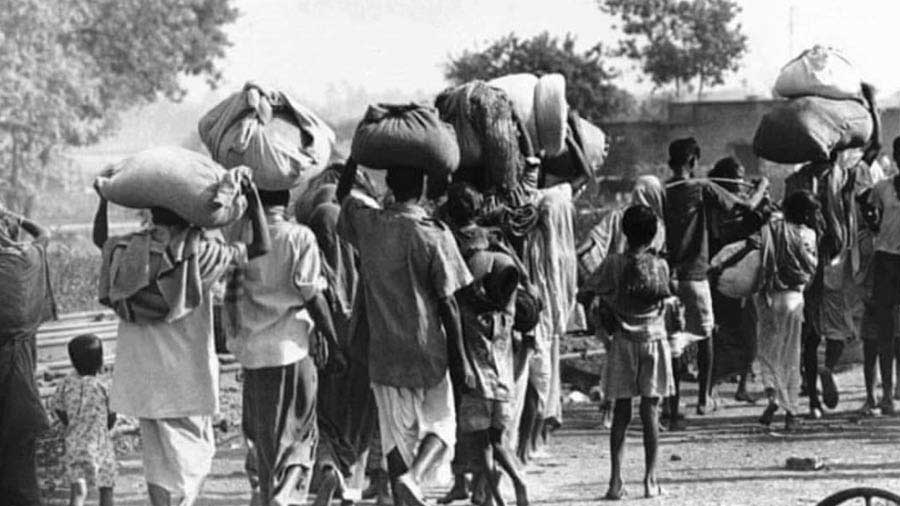
The British preferred Indians over Chinese as indentured labourers because they thought that the former were better at taking orders without asking questions TT Archives
Your book highlights that around 85 per cent of the men and women indentured by the British were Indians, most of whom were sent to the Caribbean and Mauritius. Why did the British single out so many Indians for indenture?
The British had tried to get the Chinese, too. The British had a misconception that Indians were meek and docile people, good at taking orders and asking no questions. They also believed that the Chinese were undisciplined opium addicts who weren’t hardworking. All this is documented. In Mauritius, a tiny community of Chinese was recruited in the early stages of indenture and then stopped. Because the Chinese refused to go. I suppose the Indians continued to go because of their dire economic circumstances and possibly to save money for their families back home. Plus, many of them died on the plantations, too. The British initially took only men. But later they changed it by having 60 women for every 40 men. Women weren’t willing to go in such numbers, and that’s when the kidnapping spree began.
Could you give us an idea of how much of the indentured labour from India was from Kolkata and West Bengal? And did Bengalis constitute a large share of that?
There were very few Bengalis who were indentured. Most of the indentured people were from present-day Bihar, Jharkhand, Odisha and eastern Uttar Pradesh. Even though the indentured people were transported through Kolkata, most of them were from outside Kolkata. Tribal Bengalis or Bengalis who had fallen into dire economic situations made up some of the indentured labour. As the British started favouring zamindars as compradors (a second class of exploiters), more peasants were forced out of their land. That’s when the Bengalis also started joining the indentured routes.
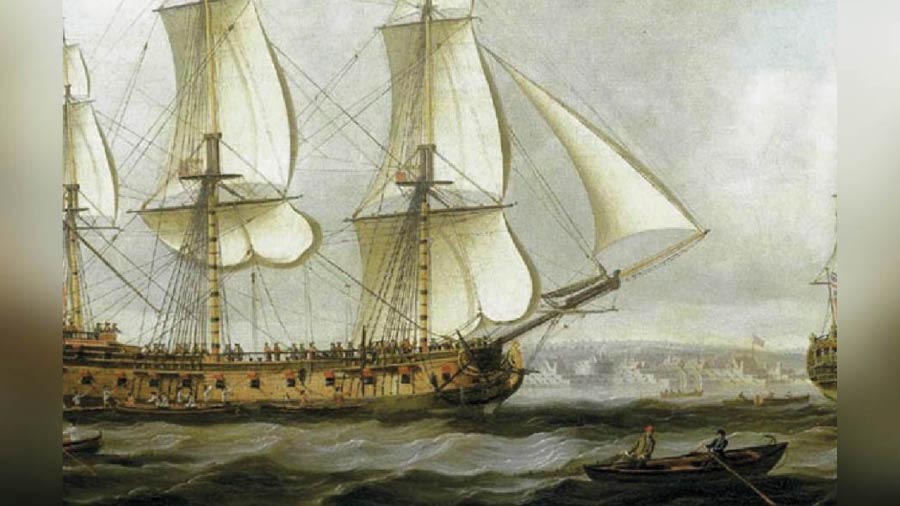
Indentured people were given canned food on voyages, which Indians were not used to TT Archives
What was the general experience of the indentured like on the long voyages that took them from India to other British colonies?
It was a horrible experience. Many died on the way, often by contracting cholera. If you fell ill, there was a chance you’d be thrown overboard. The food that was given was inadequate. It was canned food, the kind Indians weren’t used to. Plus, the spaces were small and tight and the conditions were insanitary. However, as a result of their struggle, the indentured people also formed bonds on board. Caste, food and other barriers were cast aside as the survivors became each other’s jahaji bhais and jahaji behens.
What is the difference between free labour and indenture?
Free labour referred to those who had worked for a while and had saved enough money to buy a plot. They sometimes hired the indentured labour for their service. Over a period of time, these hard-working Indians built their own little communities. That’s how these rainbow nations developed as they were able to surmount their challenges and turn things around. Gradually, they became a part of the great Indian diaspora, but one that’s fundamentally different from what you’d find, say, in San Francisco.
‘Indentured women were given no maternity leave or extra food during pregnancy’
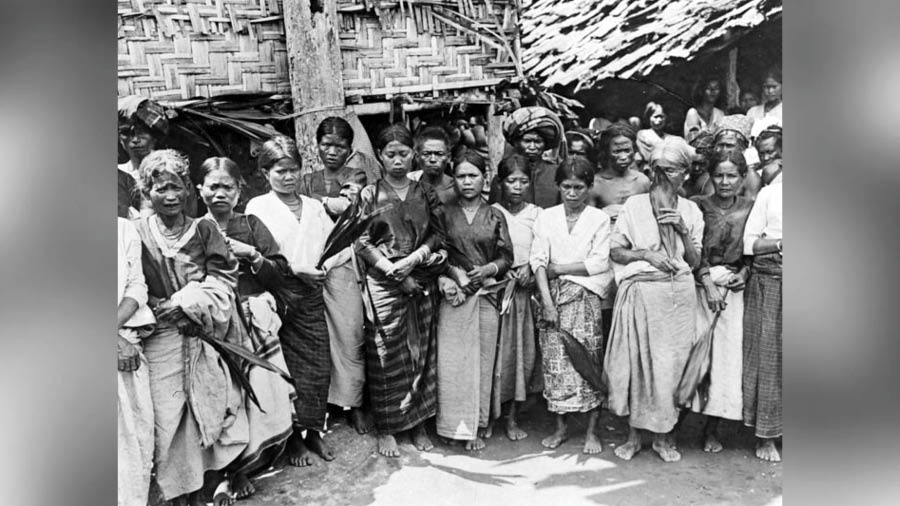
Continuous mistreatment of the indentured women finally led them to break loose, says Mukherjee Wikimedia Commons
In what ways was indentured labour even more atrocious for women than it was for men? Could you briefly take us through how many women stood up to such vile treatment?
The indifference to the requirements of indentured women was shocking. They were given no maternity leave or extra food during pregnancy. They were expected to come back to work the day after their delivery and given no time to breastfeed their babies, who had to be brought along. Indentured women were unfairly labelled as sex workers by the British as well as the male chauvinists in our own country, denigrating them as sexual objects. But that’s far from the truth. Yes, some women may have been sex workers, but many went to overcome their economic circumstances or simply to prevent themselves from starving. Many more were kidnapped.
Continuous mistreatment of the indentured women finally led them to break loose. They organised themselves as female labour and stepped up their resistance. They started beating up the men who were abusive to them. Often enough, it was one man against 20 women, and these were strong women. They also participated in the labour strikes that happened in Fiji and Mauritius at the time.
The role of Malviya and Gandhi against indenture

It was Madan Mohan Malviya who first informed Mohandas Karamchand Gandhi about indentured Indians in foreign lands Getty Images
Who were the most influential changemakers in India when it came to prohibiting indenture?
It was mainly Malviya and Mohandas Karamchand Gandhi. An Anglican priest by the name of C.S. Andrews was also influential, although he was anti-indentured women. There was Gopal Krishna Gokhale, too, in the early years. On the other hand, many among the so-called bhadralok of Bengal thought indenture was a good thing. It took them a while to understand what indenture meant for Indian dignity and sovereignty. The Arya Samaj also played an important role in raising awareness against indenture. Lord Hardinge, as one of the viceroys at the time, knew indenture was evil and needed to be removed. Instead, he was himself removed for his troubles.
It was Malviya who had first told Gandhi about indenture and asked him to stop over in Mauritius while returning from South Africa to India. Mauritius was then in the grip of bubonic plague, meaning Gandhi couldn’t travel much around the country. But he had seen enough. On coming back to India, he sent two trusted barristers to educate the indentured Indians of their rights. Back home, agitations began against indenture after horrific stories about the treatment of Indians started spreading through the regional press and causing outrage. Ultimately, it was the First World War that brought an end to indenture. The British weren’t doing well on the high seas and knew they couldn’t win the war without Indian involvement. They stopped recruiting indentured labour because they wanted Indians to fight their war. The German submarines, known as the U-boats, had also stopped the movement of indentured persons by intercepting them as they were being transported by the British.
‘Indenture and its history should be included in the school syllabi across the country’

Mukherjee wants India to have indenture museums to promote greater awareness of the country’s history Bhaswati Mukherjee
What can India do to memorialise the sad history of indenture?
The indentured routes have already been inscribed. As the next step, we need to have indenture museums in places from where these people were taken as well as in places where nobody knows about them. We must remember that the indentured Indians never gave up their struggle for identity, it’s what gave them hope and the courage to continue. If you go to these places where the indentured labour used to stay, you’ll still find an old Bhagavad Gita or the Quran. You’ll still see people wearing dhotis or saris. We also need to do more to counter the narrative that Indians are a docile people who will simply swallow humiliation. This isn’t true at all. This is a fabricated history of our people as written by others. We couldn’t have built the civilisation we have if we were inherently docile or subservient. Additionally, I feel that indenture and its history should be included in the school syllabi across the country, just like slavery is taught in Africa.
Lastly, are you working on any follow-up projects yourself?
My book is being translated into French and Bhojpuri and I’m also planning to work on a sequel, focusing exclusively on indentured women. I have a lot of material on how the indentured women organised themselves and fought back. I couldn’t put everything into this book, which is why I’m going to write another one.
